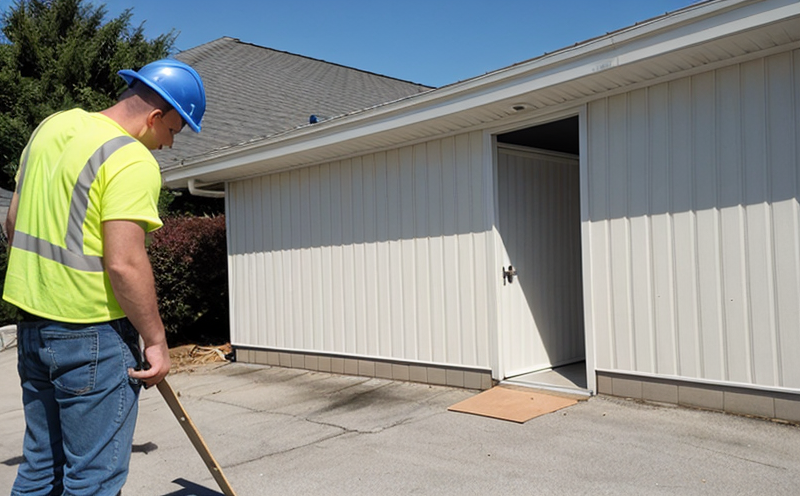Building envelope inspection
The building envelope is a crucial component of any structure, acting as a barrier to protect against weather elements such as wind, rain, snow, and temperature extremes. It comprises the walls, roof, floors, doors, windows, and other elements that separate the interior from the exterior environment. A comprehensive inspection of the building envelope ensures its integrity, durability, energy efficiency, and compliance with relevant standards and codes.
The primary goal of a building envelope inspection is to identify potential vulnerabilities or deficiencies in the construction and materials used. This can include issues such as air leakage, water penetration, thermal bridging, inadequate insulation, and insufficient weather resistance. These defects not only compromise the comfort and safety of occupants but also lead to increased energy consumption and higher maintenance costs over time.
According to ISO 10384-2:2016, "Energy performance of buildings -- Determination of energy use," a well-inspected building envelope contributes significantly to reducing the overall energy demand. By addressing these issues early in the lifecycle of a structure, owners and operators can achieve long-term cost savings and environmental benefits.
The process of inspecting a building envelope involves several key steps. Initially, field surveys are conducted to observe visible signs of deterioration or damage. This is followed by more detailed assessments using specialized equipment such as infrared thermography cameras, blower door tests, and weather station data analysis. These tools help in quantifying the extent of any deficiencies and provide precise measurements that can guide remediation efforts.
Once identified, these vulnerabilities are addressed through targeted repairs or replacements. For instance, gaps in insulation might be filled using foam sealants, while cracks in the exterior walls may require repainting or patching with appropriate materials. It's essential to use products and techniques that comply with local building codes and standards like ASTM D3259-18 for weather stripping.
The success of a building envelope inspection is not just about identifying issues; it also lies in ensuring lasting solutions. By adhering strictly to best practices outlined in EN 1706:2014, "Building construction -- Quality assurance requirements," inspectors can maintain high standards throughout the entire process.
Regular inspections are crucial for maintaining a healthy and efficient building envelope. They should be scheduled at regular intervals based on factors like climate conditions, age of the structure, and previous inspection results. Early detection allows for timely interventions that prevent minor problems from escalating into major issues requiring more extensive repairs.
Benefits
- Enhanced Energy Efficiency: By sealing leaks and improving insulation, an efficient building envelope reduces heating and cooling costs significantly.
- Better Indoor Air Quality: A properly maintained envelope prevents pollutants from entering the indoor environment, leading to healthier living conditions.
- Increased Durability: Addressing early signs of wear extends the lifespan of structural elements, reducing the need for costly replacements down the line.
- Improved Comfort: A well-inspected envelope ensures consistent temperature and humidity levels within the building, enhancing occupant satisfaction.
Customer Impact and Satisfaction
Customers benefit greatly from thorough building envelope inspections. Not only do they enjoy improved comfort and reduced utility bills, but they also gain peace of mind knowing that their properties are safe and energy-efficient. This translates directly into higher customer satisfaction ratings for property managers and developers alike.
A satisfied customer base fosters loyalty and positive word-of-mouth recommendations, which are invaluable assets in the competitive real estate market. Moreover, compliance with regulatory requirements adds another layer of assurance to potential buyers or tenants, thereby enhancing overall property value.
Use Cases and Application Examples
New Construction: During initial construction phases, envelope inspections ensure all materials meet specification before final sealing. This prevents costly rework after occupancy.
- In a recent project at a multi-family housing development in New York City, rigorous inspection protocols helped catch several instances of improper flashing installation early on, saving both time and money.
Existing Buildings: Routine inspections for existing buildings help maintain optimal performance over time. Regular updates based on findings contribute to sustained efficiency and longevity.
- An office building in Los Angeles underwent periodic envelope checks which resulted in a 20% reduction in annual heating costs after implementing recommended improvements like adding additional insulation layers.
Retrofitting: When buildings are being retrofitted to meet updated energy codes, comprehensive envelope inspections become even more critical. They ensure that all new installations fit seamlessly with existing structures and perform optimally together.





